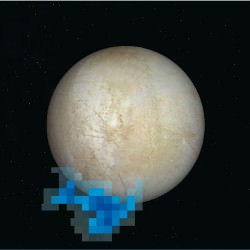When it comes to life on Earth, we’re not sure if it came from the outside (transported by comets) or on the inside. A new theory focuses on the “interior ” theory, saying that microbes could have evolved from non-living matter such as chemical compounds in minerals and gases.
“Before biological life, one could say the early Earth had ‘geological life’. It may seem unusual to consider geology, involving inanimate rocks and minerals, as being alive. But what is life?” stated Terry Kee, a biochemist at the University of Leeds in the United Kingdom who participated in the research.
“Many people have failed to come up with a satisfactory answer to this question. So what we have done instead is to look at what life does, and all life forms use the same chemical processes that occur in a fuel cell to generate their energy.”
When thinking of a car, the research team says, they point out that fuel cells create electrical energy through the reaction of fuels and oxidants. This is called a “redox reaction”, which takes place when a molecule loses electrons and another molecule gains them.
In plants, photosynthesis creates electrical energy when carbon dioxide breaks down into sugars, and water is oxidized into molecular oxygen. (By contrast, humans oxidize sugars into carbon dioxide and break down the oxygen into water — another electrical energy process.)
Now, let’s go a step further. Hydrothermal vents are hot geysers on the sea floor that are often considered an interesting spot for life studies. They host “extremophiles”, or forms of life that exist (“thrive” is the better word) despite a harsh environment. The researchers say these vents are a sort of “environmental fuel cell” because electrical energy is generated from redox reactions between seawater oxidants and hydrothermal vents.
And this is where the new research comes in. At the University of Leeds and NASA’s Jet Propulsion Laboratory, the researchers put iron and nickel in the place of the usual “platinum catalysts” found in fuel cells and electrical experiments.

While the power was reduced, electricity did indeed flow. And while researchers still don’t know how non-life could have transformed into life, they say this is another step to understanding what happened. What’s more, it could be useful for future trips to other planets.
“These experiments simulate the electrical energy produced in geological systems, so we can also use this to simulate other planetary environments with liquid water, like Jupiter’s moon Europa or early Mars,” stated Laura Barge, a researcher from the NASA Astrobiology Institute* who led the research.
“With these techniques we could actually test whether any given hydrothermal system could produce enough energy to start life, or even, provide energetic habitats where life might still exist and could be detected by future missions.”
You can read about the research in the journal Astrobiology.
Source: University of Leeds
* Disclosure: The author of this article is also a freelancer for the NASA Astrobiology Institute.

